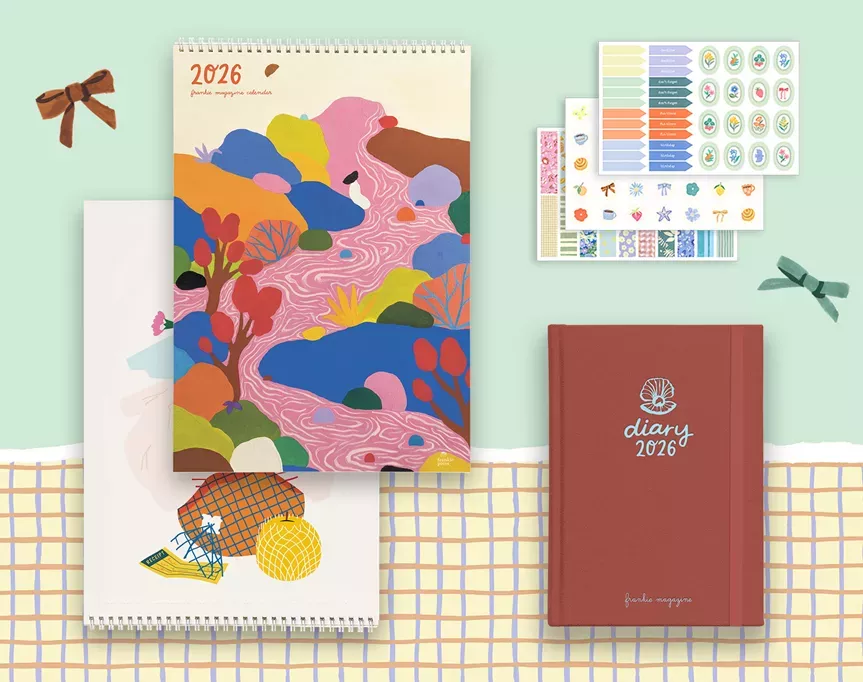how the start of a new year is celebrated around the globe
The 2025 Lunar New Year kicks off on January 29th! Here's how this event, and other new year events, are celebrated around the world.
The thought of only getting one day a year to ‘reset’ your life – January 1st – can be pretty daunting. Until, that is, you realise that fresh starts are celebrated all year round, depending on where you live. MĀORI NEW YEAR The luminous cluster of stars that the Māori people call Matariki is visible at different times all over the world – it shows up in ancient texts from Greece to India, was a crucial marker for the mariners of antiquity, and was visible to the Celts and pre-colonial populations in North America, Australia, the Philippines and many more. The Greeks call it Pleiades; in English it is known as the Seven Sisters; the Japanese call it Subaru or “gathered together”, and in Hawaiian it is Makali’i, “eyes of royalty”. In New Zealand/Aotearoa, the stars of Matariki burn in the early hours of morning during the mid-winter months, an occurrence which marks the beginning of the Māori new year. Traditionally, the cluster was closely tied to the planting, harvesting and hunting of the coming season; if the stars were bright and clear, it was a sign of abundance. Matariki is a time for Māori to commemorate those who have passed away in the previous year, to give thanks, and to look forward to the future. Nine of the hundreds of stars that make up the cluster are visible to the naked eye, each of which holds a special significance and distinct story in Māori culture.
MĀORI NEW YEAR The luminous cluster of stars that the Māori people call Matariki is visible at different times all over the world – it shows up in ancient texts from Greece to India, was a crucial marker for the mariners of antiquity, and was visible to the Celts and pre-colonial populations in North America, Australia, the Philippines and many more. The Greeks call it Pleiades; in English it is known as the Seven Sisters; the Japanese call it Subaru or “gathered together”, and in Hawaiian it is Makali’i, “eyes of royalty”. In New Zealand/Aotearoa, the stars of Matariki burn in the early hours of morning during the mid-winter months, an occurrence which marks the beginning of the Māori new year. Traditionally, the cluster was closely tied to the planting, harvesting and hunting of the coming season; if the stars were bright and clear, it was a sign of abundance. Matariki is a time for Māori to commemorate those who have passed away in the previous year, to give thanks, and to look forward to the future. Nine of the hundreds of stars that make up the cluster are visible to the naked eye, each of which holds a special significance and distinct story in Māori culture. CHINESE NEW YEAR Falling according to China’s lunisolar calendar – which is based on astronomical observations of the Sun’s longitude and the phases of the Moon – Chinese New Year occurs between January 21st and February 20th on the Gregorian calendar (aka the calendar that we follow here in Australia). The enduring traditions that surround the period – ancestor worship, cleaning the house, visiting neighbours – pre-date Catholic Europe’s adoption of the Gregorian calendar by more than 1500 years. According to one legend, the festival’s traditions began thousands of years ago, when villagers would be attacked at the beginning of each year by a horned, lion-like creature named Nian. The monster was afraid of loud noises, bright lights and the colour red, hence the prominent use of firecrackers and fireworks, red clothes and red lanterns in Chinese New Year celebrations.
CHINESE NEW YEAR Falling according to China’s lunisolar calendar – which is based on astronomical observations of the Sun’s longitude and the phases of the Moon – Chinese New Year occurs between January 21st and February 20th on the Gregorian calendar (aka the calendar that we follow here in Australia). The enduring traditions that surround the period – ancestor worship, cleaning the house, visiting neighbours – pre-date Catholic Europe’s adoption of the Gregorian calendar by more than 1500 years. According to one legend, the festival’s traditions began thousands of years ago, when villagers would be attacked at the beginning of each year by a horned, lion-like creature named Nian. The monster was afraid of loud noises, bright lights and the colour red, hence the prominent use of firecrackers and fireworks, red clothes and red lanterns in Chinese New Year celebrations. NOWRUZ (PERSIAN NEW YEAR) Based on the Northern Hemisphere spring equinox, the Persian New Year celebration Nowruz usually falls between March 19th and March 22nd on the Gregorian calendar. The roots of Nowruz stretch back over 3000 years, emanating from the pre-Islam Iranian religion of Zoroastrianism. In the lead-up to the day, it is traditional that one will do a major spring clean or what’s locally known as “shaking the house”. People buy new clothes to wear in the new year and display flowers such as hyacinths and tulips. Also in the lead up to Nowruz is the tradition of “spoon banging”, a Persian version of “trick or treat” wherein people will don disguises and go from house to house, banging cutlery against dishes and receiving snacks from their neighbours. In Iran, the Nowruz holidays last 13 days. On the final day, as part of the ceremony called Sizdah Bedar, Iranians will mark the end of the new year celebrations by venturing into nature and spending the day outdoors.
NOWRUZ (PERSIAN NEW YEAR) Based on the Northern Hemisphere spring equinox, the Persian New Year celebration Nowruz usually falls between March 19th and March 22nd on the Gregorian calendar. The roots of Nowruz stretch back over 3000 years, emanating from the pre-Islam Iranian religion of Zoroastrianism. In the lead-up to the day, it is traditional that one will do a major spring clean or what’s locally known as “shaking the house”. People buy new clothes to wear in the new year and display flowers such as hyacinths and tulips. Also in the lead up to Nowruz is the tradition of “spoon banging”, a Persian version of “trick or treat” wherein people will don disguises and go from house to house, banging cutlery against dishes and receiving snacks from their neighbours. In Iran, the Nowruz holidays last 13 days. On the final day, as part of the ceremony called Sizdah Bedar, Iranians will mark the end of the new year celebrations by venturing into nature and spending the day outdoors. ROSH HASHANAH (JEWISH NEW YEAR) Rosh Hashanah is a two-day observance and celebration that begins on the first day of Tishrei, the seventh month of the lunisolar Jewish calendar (which typically falls between September and October on the Gregorian calendar), marking the start of the civil year. A typical ritual on Rosh Hashanah is the blowing of the shofar – an instrument traditionally carved from a hollowed-out ram horn – in accordance with the Hebrew Bible’s direction to “raise a noise” on Yom Teruah (the biblical name for the new year celebration). Jewish law requires that the shofar be blown 30 times on each day of Rosh Hashanah, and customarily it is blown 100 or 101 times on each day. Rosh Hashanah meals are varied and rich in symbolism – apples dipped in honey to represent a sweet new year; round challah bread to symbolise the cycle of a year; pomegranates, with their many seeds, denoting a fruitful year to come. In the month preceding Rosh Hashanah, called Elul, Jews are exhorted to begin a process of self-examination and repentance culminating in the 10 “Days of Awe” that kicks off with Rosh Hashanah.
ROSH HASHANAH (JEWISH NEW YEAR) Rosh Hashanah is a two-day observance and celebration that begins on the first day of Tishrei, the seventh month of the lunisolar Jewish calendar (which typically falls between September and October on the Gregorian calendar), marking the start of the civil year. A typical ritual on Rosh Hashanah is the blowing of the shofar – an instrument traditionally carved from a hollowed-out ram horn – in accordance with the Hebrew Bible’s direction to “raise a noise” on Yom Teruah (the biblical name for the new year celebration). Jewish law requires that the shofar be blown 30 times on each day of Rosh Hashanah, and customarily it is blown 100 or 101 times on each day. Rosh Hashanah meals are varied and rich in symbolism – apples dipped in honey to represent a sweet new year; round challah bread to symbolise the cycle of a year; pomegranates, with their many seeds, denoting a fruitful year to come. In the month preceding Rosh Hashanah, called Elul, Jews are exhorted to begin a process of self-examination and repentance culminating in the 10 “Days of Awe” that kicks off with Rosh Hashanah.
This is an edited extract from frankie issue 123. To read the rest of the story, swing past the frankie shop or visit one of our lovely stockists. To nab future issues, subscribe here.












.jpg&q=80&w=316&c=1&s=1)













.jpg&q=80&w=316&c=1&s=1)










